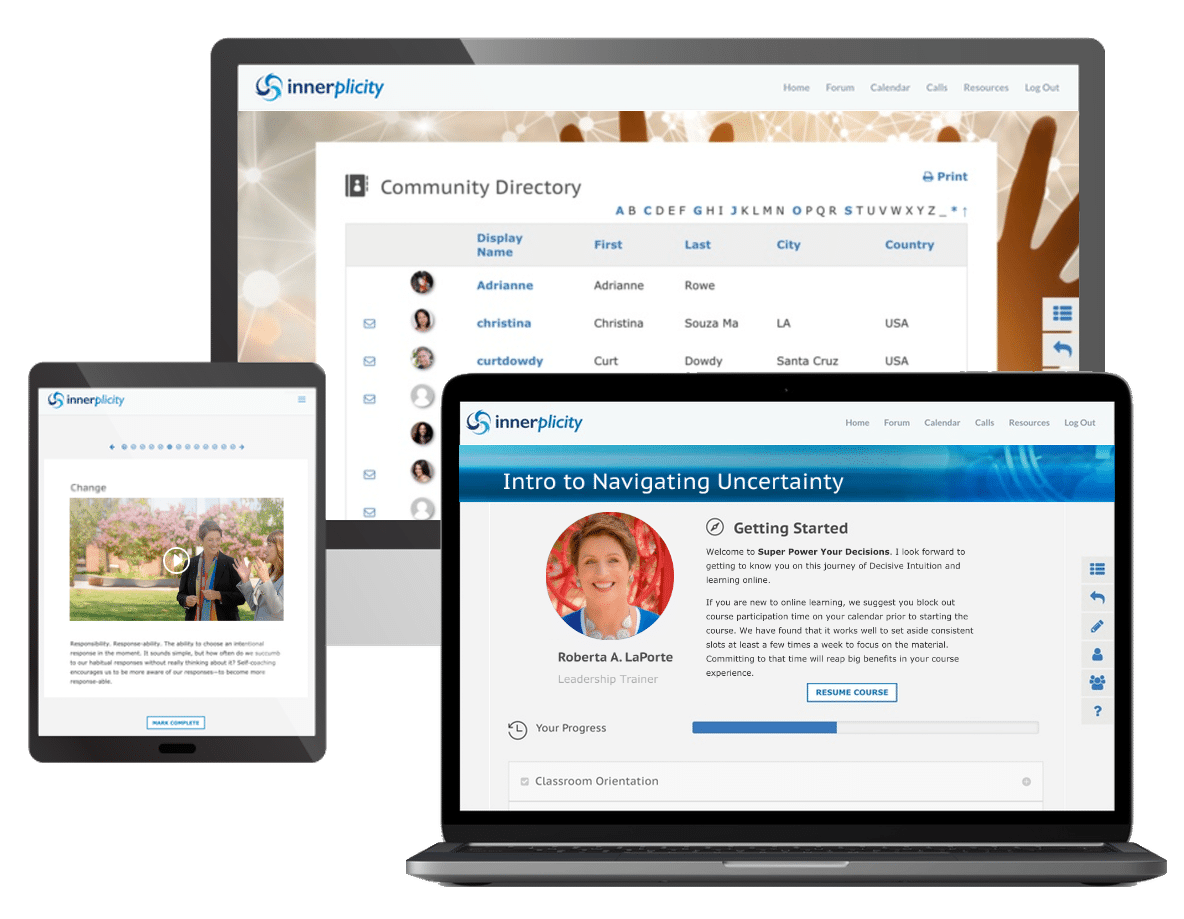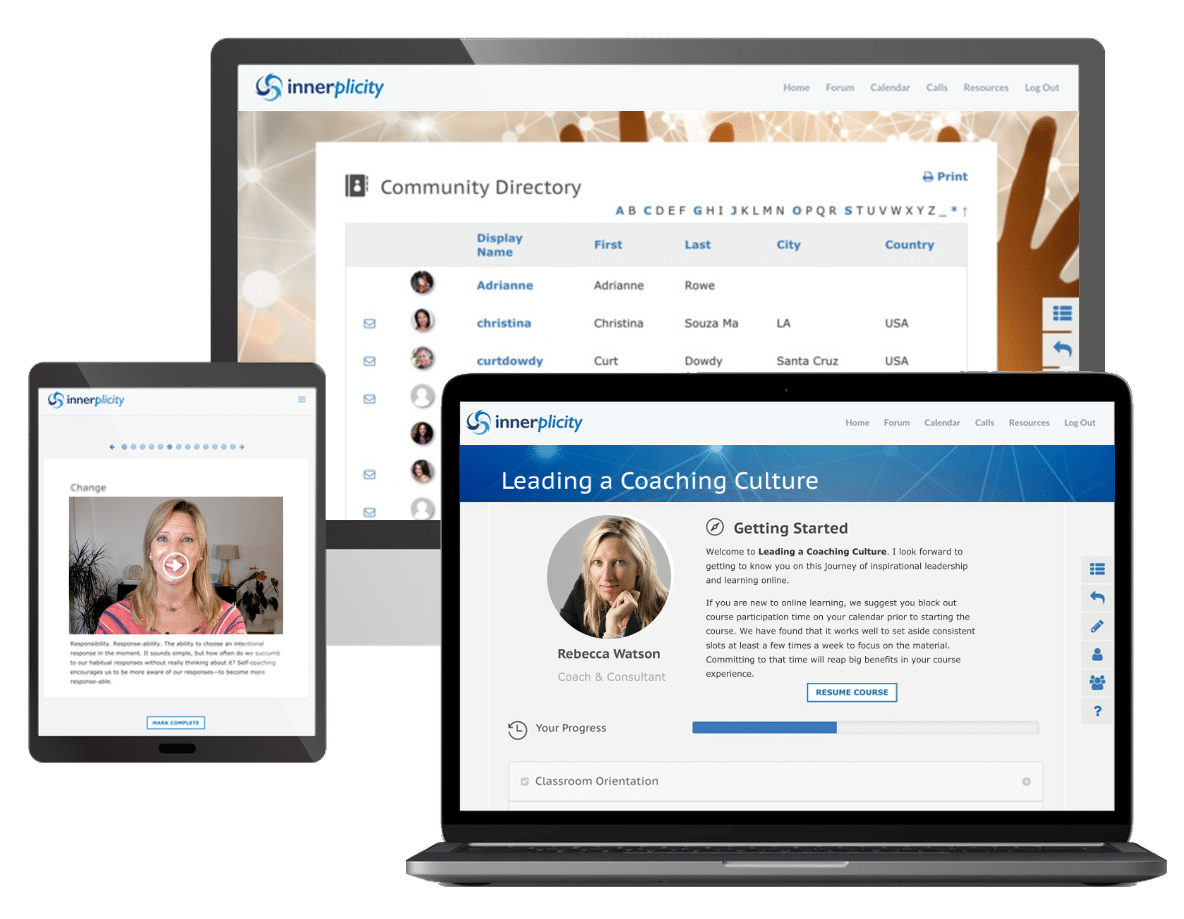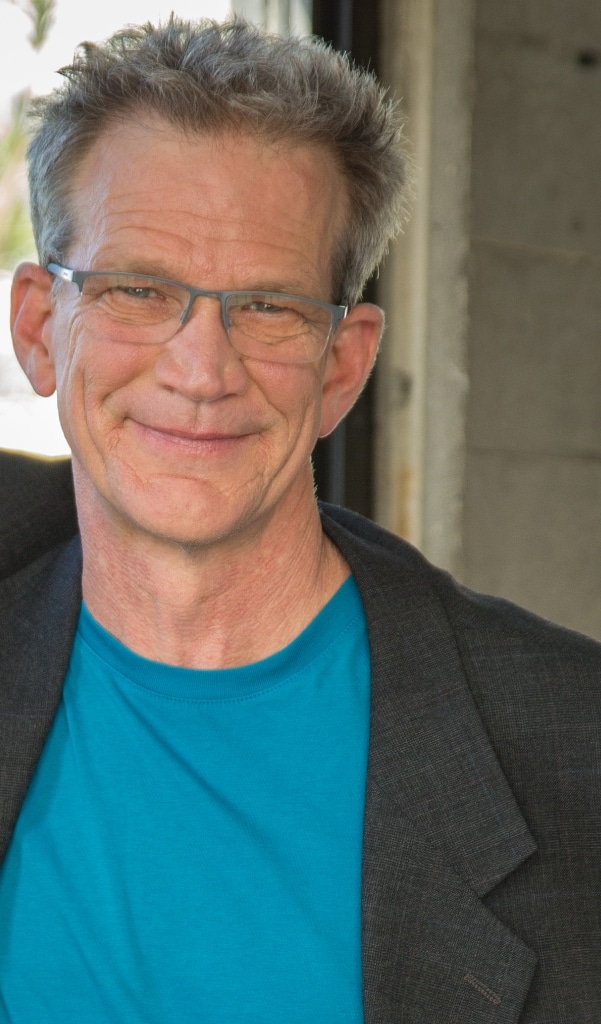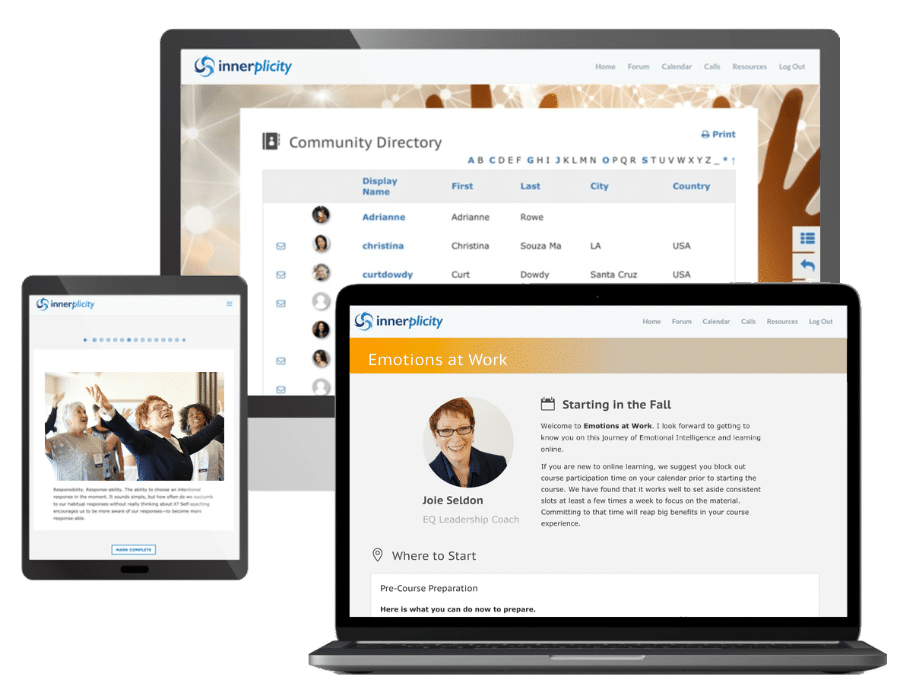No Results Found
The page you requested could not be found. Try refining your search, or use the navigation above to locate the post.


We’ve been waiting a long time for good news. And now there’s hope on the horizon. With vaccines rolling in, cases trending down, and some regions already declared “fully open,” it may start to feel like the worst of the pandemic is behind us. But will we truly return to where we left off before this all began? The answer is no, and I submit that we won’t want to return to our old ways.
The pandemic has shown us a few things.
The fact is, amidst lockdowns, disruptions and adjusting to isolation — plus new ways of conducting ourselves in public, caring for our children, and working (or not working) — many of our personal boundaries for what we can tolerate or adapt to have been steamrollered. Even worse, millions of families worldwide are still deep in grief over loved ones who were taken too soon.
We’re not out of the woods yet. More uncertainty lies ahead. Alarming variants are on the rise. It will take a very long time to vaccinate 80% of the world’s 7.8+ billion people.
How can we possibly handle more disruption?
Any time our boundaries are pushed, it provides us with the opportunity to look in the mirror. We should all be able to recognize that we’ve stumbled along the way. And we should always be forgiving of ourselves for doing so.
Seven points to consider:
Even when we do get back to a more comfortable existence, we’ll find that our world has forever changed. Some of our favorite restaurants or businesses may have closed. The online experience will continue to occupy an ever bigger component of our lives, as more office workers than ever will spend more time working from home. Online education and training, even after children have returned to classrooms, is also here to stay.
While we grieve our losses, we should also recognize that something better generally arises following big disruptions. I believe that we’ll enter a mini-renaissance of sorts. The pandemic will have accelerated new, innovative ways of engaging our colleagues and environment. So now is the time to ask ourselves if we’re prepared.
A mentor once told me, “it’s not so important to know what our future will bring as it is to know how we’ll receive it.” She was talking about embracing a growth mindset — continually developing ourselves so that we become ever more graceful and adept with whatever comes our way.
As we anticipate our next chapter in life, here are some key questions to ask of ourselves or our teams. Am I putting my best self forward? Is my organization’s culture growing and thriving? Is it sustainable? Are we truly making a difference here? How can we prioritize our personal or organizational development to better receive our future?
What better time than now for us to invest in developing and strengthening our grace?
Curt Dowdy is Co-Founder and CEO of Interplicity, the parent company of the InnerProfessional.com leadership & professional development catalog. As a former corporate executive and now entrepreneur, Curt and the InnerProfessional team are on a mission to deliver transformative adult education experiences, modeling improved practices toward engaging our lives and world.
The page you requested could not be found. Try refining your search, or use the navigation above to locate the post.
2 min - As a leader, the energy you bring into each interaction (virtual meeting/phone/email) has...
- 2 min - What if We’re NOT Hard-Wired? How often have you heard others (or yourself) say, “that’s...
➤ Practical self-coaching techniques to identify and break through self-limiting behaviors and thought patterns. Learn to be your own coach and take more ownership of your career development.


It seems like almost every leader I speak with these days asks, at some point in our conversation: “How do I keep my team motivated and engaged as the pandemic, work-from-home, kids-at-home and everything that comes with that continues? I feel like I have tried everything and nothing’s working!”
If you are feeling this way – trust me – you are not alone. No one has the magic answer; everyone is still struggling with how to manage through what feels like an unending period of change, complexity and uncertainty. There is no doubt that we keep having to adapt to more “new normals”. Yes, 2020 is in the rearview mirror, but it does feel like 2021 is offering up more of the same, doesn’t it? And noted futurists are predicting that we will see more change in the next two years than we have seen in the last ten – so fasten your seat belt and get ready!
When our environment is challenging, we operate under a heavy cognitive load. Recently, that’s come from new ways with work, family, health and safety, how we travel, shop, exercise – and more. When our brains are under this type of strain, we struggle to deal with big issues, problems or assignments. We can only take on so much because we no longer have the personal resources or mental capacity to deal with “just one more thing“.
So how do you take the next step? And how do you keep moving yourself and your team forward, and use the agency that we often forget we have?
Here is an approach that I believe can be very helpful. We all face unexpected situations, problems or issues – at home and at work. These don’t have to be major obstacles or some career-defining issues; they can just be something someone has brought to your attention to address. Instead of looking at each of these with a “this is a big deal and I need to fix it now” perspective, or creating a comprehensive action plan with a long list of to-dos, think: ESSENTIAL VS. EXHAUSTIVE.
What is one small step, one simple action you, your team or family member can take that will give direction, make progress, and enable you to feel some satisfaction in moving forward? The goal here is to act, not wait for the perfect solution; to do something – even if you don’t know exactly what the road ahead looks like. No one does. And that’s more than OK for now.
With your next disruption, where can you take a step that is ESSENTIAL – NOT EXHAUSTIVE?
After spending 25 years leading Fortune 50 organizations and technology start-ups, Bobbie draws on positive psychology and her experience as a six-time Ironman triathlons finisher to help organizations navigate uncertainty and get ready for anything. Learn more »
The page you requested could not be found. Try refining your search, or use the navigation above to locate the post.
2 min - As a leader, the energy you bring into each interaction (virtual meeting/phone/email) has...
- 2 min - What if We’re NOT Hard-Wired? How often have you heard others (or yourself) say, “that’s...
Build leadership skills to navigate through the unrelenting uncertainty of our times. Learn practices that are science-based, scalable and easy to implement.
4-Weeks Online
6hrs Est. Course time
Peer-group Networking



As a leader, the energy you bring into each interaction (virtual meeting/phone/email) has an effect on the energy levels of your team and those around you.
So here are three simple steps to regain your own energy at work and to help your team regain theirs too.
Thoughts that drain our energy are not necessarily untrue; they are just not helpful to us. They could be things like “I hate my job but I’m stuck here”, “I hate my boss, he/she doesn’t rate me either”, “I’m too tired to do this”, “what’s the point of this?”, “I’m not valued here”, etc.
If you recognize any of these sorts of thoughts, then just repeat these three steps, and notice how at the end of your day you feel less tired.
Just by raising your energy and positivity, you will help your team and anyone who you work with to also feel better. You can also use this exercise with your team members to cultivate positive energy together.
If you’d like to learn more about managing your thoughts and how they affect your energy and ability to lead others, join me on March 15, 2021 for my online course “Leading a Coaching Culture”, where we will also explore other key steps to becoming a great leader.
Rebecca is the author of Creating High Performing Teams and Conscious Leadership and the Power of Energetic Fields. Founding Brompton Associates in 2008 her purpose is to support leaders to become more conscious and operate from their highest mindset. Creating sustainable and highly productive cultures.
The page you requested could not be found. Try refining your search, or use the navigation above to locate the post.
2 min - The peal of church bells or the successive reverberations of a great temple bell: such are...
TIME TO REFLECT AND REST Leaders have been challenged and possibly pushed to their limits...
Learn to coach others and create a coaching culture for your organization. Navigate difficult conversations, run efficient meetings and deliver results. Feel inspired not tired!
6-Weeks Online
8hrs Est. Course time
Peer-group Networking



What if We’re NOT Hard-Wired?
How often have you heard others (or yourself) say, “that’s just the way I am” or “I’m just wired that way”? These phrases point to an underlying belief that we are hard-wired, and we commonly use them to rationalize our resistance to making certain changes in our lives.
Neuroscience shows us otherwise. In recent decades, extensive research has highlighted a phenomenon called neuroplasticity, which says our brains are plastic-like in that they are malleable and constantly changing. In other words, you are NOT hard-wired. You CAN change many things about yourself that you perceive as unchangeable!*
“Neuroplasticity is a 6-syllable word for hope”
– (numerous sources)
Most of us harbor one or more “deep stories” (also referred to as self-limiting beliefs). Deep stories are your own long-held beliefs about yourself or the world that can significantly limit you in all aspects of your life.
A well-known deep story is “the imposter syndrome”. This story can lead people to play small and not venture out of their comfort zone for fear of being “found out” as not
One of my deep stories was “I’m not a risk taker”. This worked brilliantly for me (wink, wink) for many years (almost 50)! Anytime something risky came up, it was easy for me to say “nope, I don’t do risk. I’m just wired that way”.
About ten years ago, when I realized it would benefit me to take certain risks, I came face-to-face with this particular deep story of mine. First, I had to be open to the possibility that my belief that “I’m not a risk taker” wasn’t a fact, which I had always assumed it to be. And accordingly, I had always assumed that it would be impossible to change.
The punch line — I am now quite comfortable with taking risks when it serves my purpose. This shift has been transformational for me. And it’s not the only deep story that I’ve shifted over the past several years. The change process is repeatable. I’ve witnessed its effect on my clients and in my Coach Your Self Up course participants as well.
One of the most satisfying aspects of my work as a leadership coach and trainer is seeing people change specific behaviors and thought patterns that they believed were unchangeable. And then seeing all the ripple effects in their lives, whether at work or home. By applying a methodology (e.g., self-coaching), you too can change aspects of your behavior or mindset that may seem impossible.*
I’m curious to hear from you. Where have you made a change that you formerly thought was impossible? (Please post your comments on LinkedIn, Facebook or Twitter.)
* When dealing with forms of mental illness (e.g., clinically-diagnosed depression or anxiety), making behavioral shifts is more challenging, and there are some areas where change may not be possible without licensed professional intervention.
A former global learning & development director at eBay, Mike is now CEO of The Unlimit Group, an executive coaching and leadership training company. Mike is also an active member of executive coaching cadres at Skyline Group International, Lee Hecht Harrison, and Sidekick.
The page you requested could not be found. Try refining your search, or use the navigation above to locate the post.
2 min - The peal of church bells or the successive reverberations of a great temple bell: such are...
TIME TO REFLECT AND REST Leaders have been challenged and possibly pushed to their limits...
How are you “showing up” at work, in relationships, in life in general? Are you fully present and engaged? Can you appropriately adapt your responses to life’s challenges? Neuroscience shows that simple, easy-to-follow attention management practices can help us achieve more satisfying results.

Author & CEO of The Unlimit Group


One of the great challenges of humanity is to learn how to harness anger as a productive emotion, instead of a destructive one. People have a lot of judgment against anger, believing it is a “negative” emotion that leads to violence if not suppressed. Or, they let their anger be in charge of their behavior and believe there is nothing they can do about it
As someone who is prone to anger, I have paid very close attention to it for the last 20 years. I have learned to make friends with it, understand its true purpose, and express it non-aggressively.
What about you?
Or do you stay present with it, listen to what it’s telling you, and act or express yourself appropriately? Not an easy thing to do.
Recently in the U.S., we had a shocking demonstration of what can happen when anger takes over. People broke laws and bragged about it. Many were traumatized or hurt, and some died.
This morning a friend said to me, “How fragile the human psyche can be when someone doesn’t have emotional maturity. They don’t have the ability to think critically.”
Anger is an essential emotion for human survival.
When your life is directly threatened, instinct takes over as part of the “Fight or Flight Response” — and it can literally save your life. In social and interpersonal situations, it helps us set necessary boundaries and move forward in our lives.
As a kid, I learned to stuff my anger. The results were a pre-ulcer stomach in the 5th grade, teenage acne, and back problems as a young adult.
Eventually, I found anger to be a compelling motivator. It helped me through many dark times when I would turn my anger away from people or myself and move towards the circumstance I found myself in. Then I was able to make choices that changed that circumstance.
Through the years, I have developed ways to be in charge of anger and communicate productively when necessary. This ability has helped me to generate more intimacy and trust in my marriage, and with my friends and business associates.
Anger can be a powerful force for positive change when used constructively.
It is possible to harness anger for good in your life by learning the skills you need to stay present with it, understand its message, and act/speak/behave in a mature and authoritative manner. I invite you to create a healthy relationship with your anger and channel it to make a positive and constructive change in your life.
Joie Seldon spent forty years building her work as a trainer, leadership coach and expert in Emotional Intelligence, teaching executives and business professionals how to benefit from one of the most valuable yet underutilized aspects of a successful career, their emotions. The author of EMOTIONS An Owner's Manual and an electrifying speaker, she's presented to worldwide audiences online and onstage.
Learn more »
The page you requested could not be found. Try refining your search, or use the navigation above to locate the post.
2 min - The peal of church bells or the successive reverberations of a great temple bell: such are...
TIME TO REFLECT AND REST Leaders have been challenged and possibly pushed to their limits...
Strengthen your emotional intelligence to better navigate the complexity of emotions in ourselves and others. Enhance work relationships and minimize stress amidst the pressures of today’s fast-paced world.
8-Weeks Online
16hrs Est. Course time
Peer-group Networking
